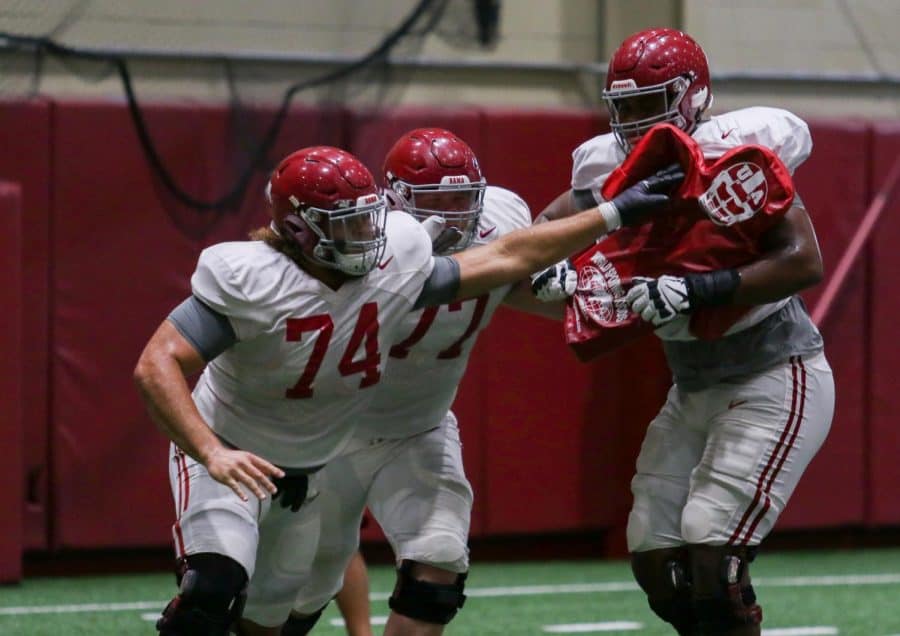Offense relies on O-line versatility
August 13, 2019
The game of football is filled with plays that appear on a highlight reel. From outstanding catches by wide receivers to bone-crushing tackles from an imposing defensive end, fans are enthralled with the theater of football.
Along with the theatrics, there is also the meat and the potatoes of the game. In this phase, the offensive line gets its moment in the spotlight.
The five players that are chosen to make up the line have the thankless job of protecting the quarterback and running back. They need to work together to build a wall while having as few as three and as many as six opposing players sprinting at them trying to get by to make a play on the ball.
To craft the optimal offensive line, Alabama sometimes asks its linemen to be versatile and willing to change positions.
In senior Matt Womack‘s three seasons with the Crimson Tide, the 6-foot-7 lineman started every game at right tackle in 2017, lost his starting job the next season, and is now the projected starter at right guard for this upcoming year.
“Matt Womack is playing guard to help us get the best five on the field,” coach Nick Saban said in March. “He’s been pretty good at that.”
Womack added this fall: “The coaches encouraged me all the time to get that versatility, which is good because last year I was ready to go in at any position. And I feel like it’s really going to help me in the future, say if something ends up happening and I have to go play another position, I feel like it’s going to help me.”
Womack’s path to the field is a common narrative for many players. At least half of the offensive linemen on the roster have played multiple positions.
Juniors Alex Leatherwood and Jedrick Wills Jr., the presumed starters at left and right tackle, both have experience at guard. Last fall Wills was practicing at right guard and Leatherwood at right tackle; then they swapped and Leatherwood, who played well as a true freshman in the national championship, started all 15 games at right guard.
“Playing inside is a whole different ballgame, for sure,” Wills said. “It’s a whole lot faster, a lot bigger guys, as well as a whole lot of second-level play. Then tackle is just like you’re kind of on your own island out there. It’s definitely two different games.”
One player who has been learning the differences between tackle and guard is top-10 overall recruit Evan Neal. The 6-foot-7 freshman from IMG Academy has practiced at left guard this fall camp after being recruited as an offensive tackle.
Guards of Neal’s size may struggle to maintain leverage and keep their pad levels low, but Neal’s high school coach believes the position change will not be an issue.
“I think with Evan that’s a really natural move,” IMG Academy head coach Kevin Wright said. “We played him at tackle just because he was that athletic. Normally you’re not gonna play [a 6-foot-7, 340-pound lineman] at tackle because he doesn’t have good enough feet. But I think Evan showed time and time again that he had good enough feet to play tackle. So moving inside, you’re not exposed as much as what you could be on the edge. And the question is are you big enough and strong enough to hold up against the guys he’s gonna see. And I think he is. So I don’t see it being an adjustment at all.”
SEC Network analyst and former Auburn center Cole Cubelic gave unique advice to a taller lineman such as Neal to help prepare for the position switch.
“[You’ve] gotta be flexible to make that transition as a tall guard,” Cubelic said. “Young offensive linemen wonder do I need to squat, power clean? Stretch. Flexibility is key when you’re that big.”





















